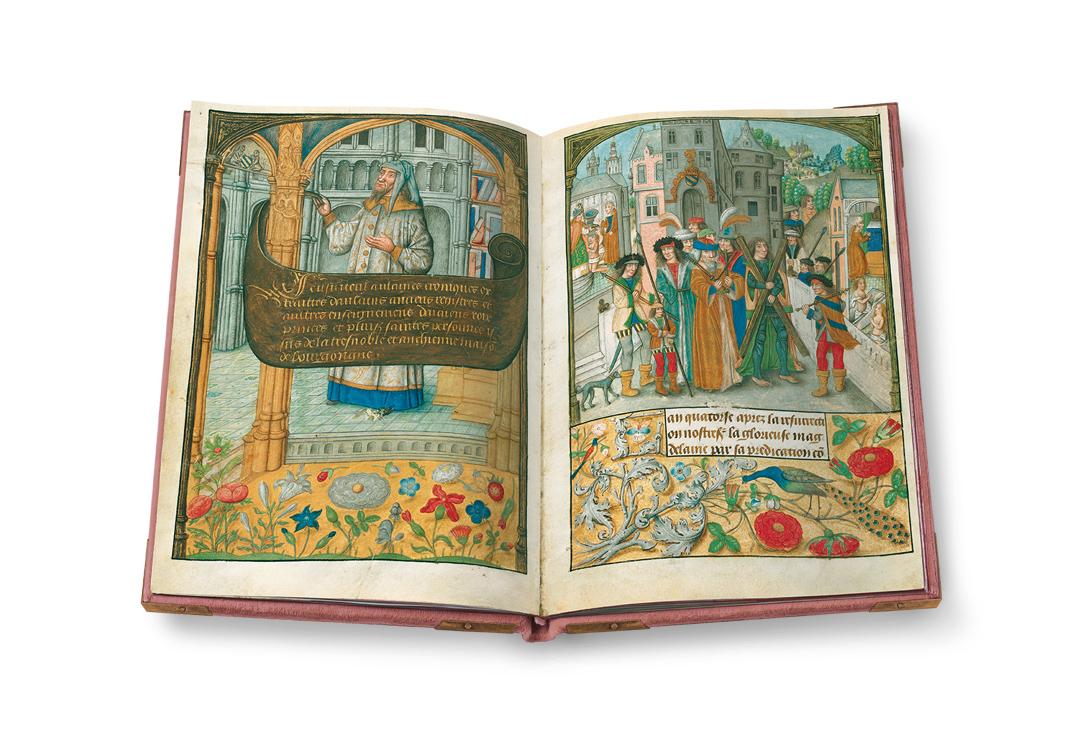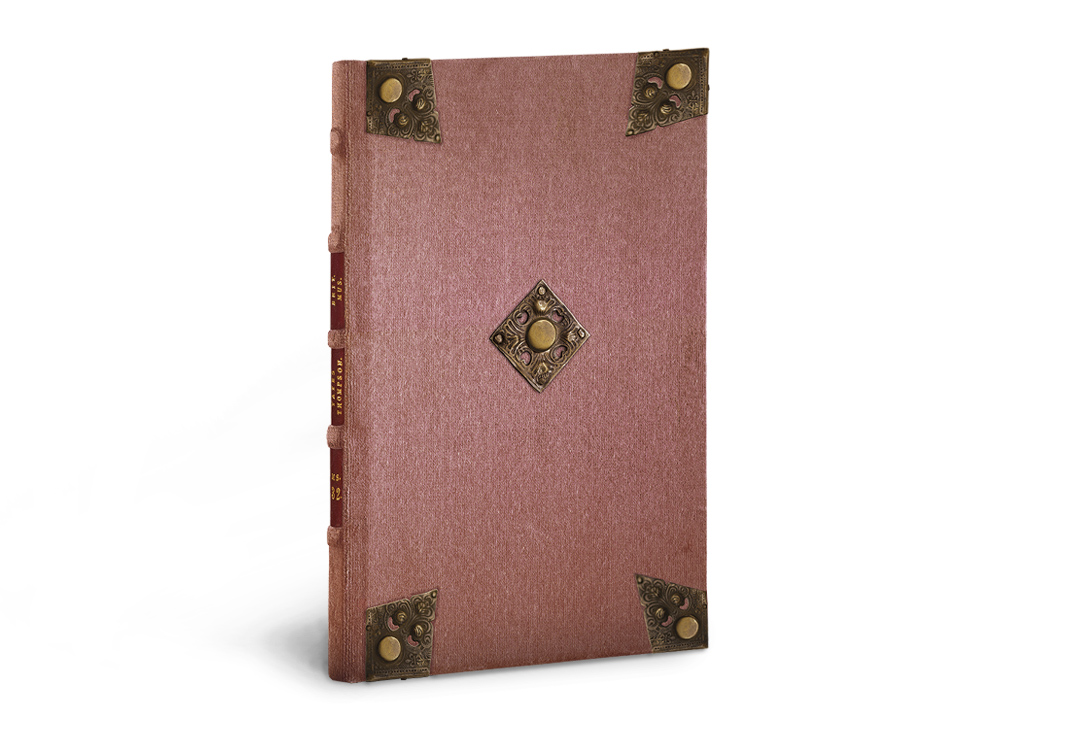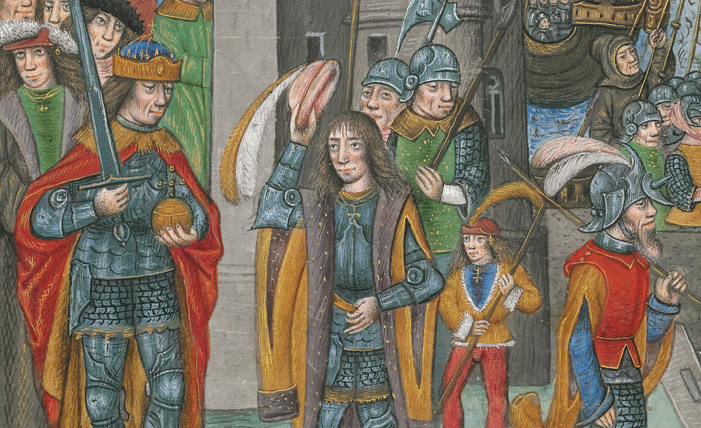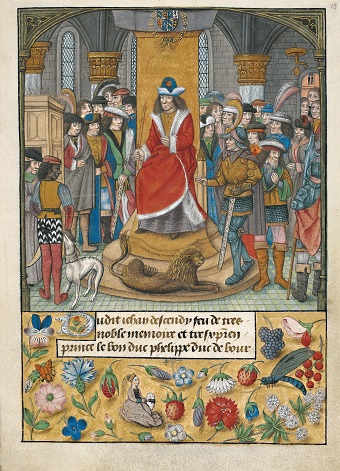The Flemish Chronicle of Philip the Fair
An Illustrated Book of Burgundian History
The Flemish Chronicle of Philip the Fair takes the viewer on a delightful journey into the past. Discover the glorious history of the House of Burgundy, fancifully visualised in sumptuous images, and described in a language suitable for children: from the beginnings under the legendary King Trophimus until the late 15th century, when Philip the Fair was born as the last duke of Burgundy!
The viewer is presented with a striking historical panorama covering a span of one and a half thousand years.The book illuminator designed the miniatures and the borders with great artistic skill, applying subtle colours and fine brushwork strokes of shimmering gold. Book illumination from the Ghent-Bruges School at its very best!
Bilderchronik Philipps des Schönen
The Flemish Chronicle of Philip the Fair: The Manuscript
The History of a Dynasty for a Child’s Eyes
The Flemish Chronicle of Philip the Fair was made in Bruges around 1480–85 for the heir to the House of Burgundy who was born on July 22, 1478. Short texts and colourful pictures presented on 30 pages recount the history of Burgundy, its rulers and major saints, from the first until the fifteenth century. Making no distinction between fact and fiction, the chronicle gave young Philip access to a fascinating world of images. In an impressive setting, sumptuously clothed noble ladies and gentlemen enact the great deeds of his ancestors. He was to identify himself with them and to realize that he would one day be the head of the dynasty, which went back to earliest Christian times and surpassed all other ruling houses.
A Work of the Ghent-Bruges School
From the 14th century, the cities of Flanders had been thriving on long-distance trade. Multiple international connections and a circle of wealthy courtly and bourgeois patrons fostered the development of a flourishing art market. Together with Ghent, Bruges rose to become an important centre of book illumination in the second half of the 15th century. Many highly talented and renowned artists worked in these cities, competing with one another. The so-called Master of Edward IV operated a workshop in this creative environment. An assistant in his Bruges workshop was responsible for the fanciful miniatures and decorated borders of this lavishly illuminated Chronicle.
For the Future Duke
The concise text of the Flemish Chronicle of Philip the Fair had earlier been commissioned by Charles the Bold, Philip’s grandfather. However, the lavish illustrations featuring detailed and colourful miniatures were obviously intended to spark a seven year-old boy’s excitement about the historical lessons contained therein. Philip the Fair’s teacher and tutor was the chronicler Olivier de la Marche, who had served at the court of the Dukes of Burgundy for many years. He probably commissioned this richly illuminated manuscript, for there was no better way to breathe new life into the historical events and help in the understanding of their interpretations than to immerse oneself in this fascinating illustrated book.
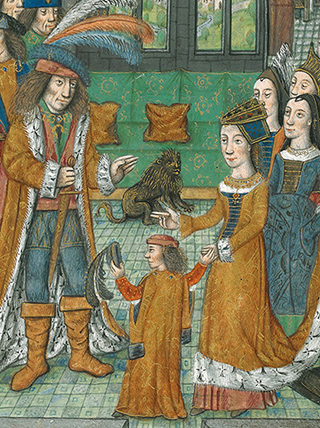
Bilderchronik Philipps des Schönen
Under the Magnifying Glass: Shimmering Gold on Every Page
The Flemish Chronicle of Philip the Fair is a great rarity: it is richly decorated and it is a manuscript specially made for a child. Using the entire range of his skills, the artist of the Ghent-Bruges School brilliantly staged the various events of Burgundian history in the miniatures. They are set against impressive palaces, imposing churches, idyllic landscapes, and Flemish city panoramas. The artists generously applied fine brushwork strokes of gold to enhance the vibrant colours in a harmonious way. Below the historical events there are trompe-l’œil strewn borders with colourful flowers, fruit and insects, naturalistically painted on a stippled gold ground.
The border on fol. 13r shows a dragonfly, an orange-coloured insect, strawberries, grapes, violets and carnations. In the centre, a lady clad in a long robe sits on the ground, with a white dog at her side.
In the miniature above, holding a scepter in his right hand, Duke Philip the Good is enthroned under a canopy. He wears the collar of the Order of the Golden Fleece which he had instituted in 1430. The duke is holding court, surrounded by a great number of people, all of them men. Most of them also wear the Order of the Golden Fleece. The coat of arms above the scene is also wreathed with the collar of the Order. The lion at the duke’s feet might indicate a heraldic device.
Bilderchronik Philipps des Schönen
The Flemish Chronicle of Philip the Fair: The Edition
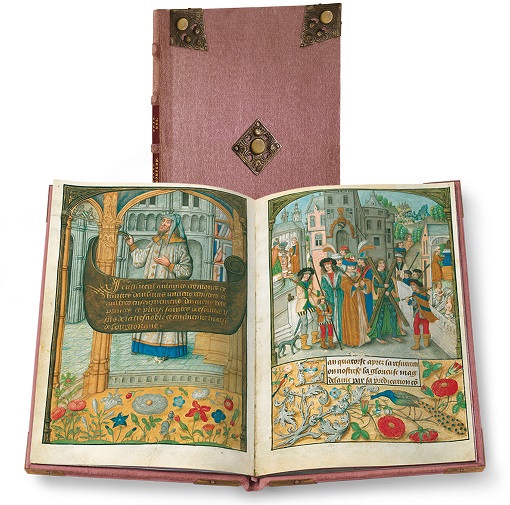
The Manuscript and the Facsimile at a Glance
The Flemish Chronicle of Philip the Fair is a fascinating account of Burgundian history intended to educate and entertain with detailed illustrations.
Sumptuous pictures, harmoniously composed with subtly shimmering gold and vibrant, delicate colours. Covered in velvet, the authentic facsimile edition gives every viewer the opportunity to directly experience this gem created by the Ghent-Bruges School of book illumination!
Manuscript: London, The British Library, Yates Thompson MS 32
Date of Origin: 1485/86
Place of Origin: Bruges
Dimensions: c. 23.0 x 17.0 cm
Extent: 30 pages (15 leaves)
Artist: assistant to the Master of Edward IV
Patron: unknown, probably Olivier de la Marche
Illumination: 11 large miniatures, borders with strewn flowers and insects, powdered gold, shell gold, fine tooling
Binding: old rose velvet with corner pieces and medallions
Commentary Volume for the Facsimile Edition by Joanna Fronska / Hanno Wijsman / Graeme Small
Print run: 680 copies
Bilderchronik Philipps des Schönen
Enjoy Viewing a Few Sample Pages:
A Glance at the Facsimile
With the miniatures depicted on the folios 14r and 15r, the historical account given in the Flemish Chronicle of Philip the Fair has finally reached the contemporary period in the 15th century.
On fol. 14r, Duke Charles the Bold, Philip’s grandfather, is holding court surrounded by his splendid retinue. Outside the palace, the noble gathering of courtiers is shown on horseback. On fol. 15r, young Philip is represented together with his parents, Mary of Burgundy and Maximilian of Hapsburg, in an interior setting.
The text on the undecorated pages between the folios is written in a highly calligraphic script called “lettre batȃrde”.
Bilderchronik Philipps des Schönen
A Challenging Production: fac simile
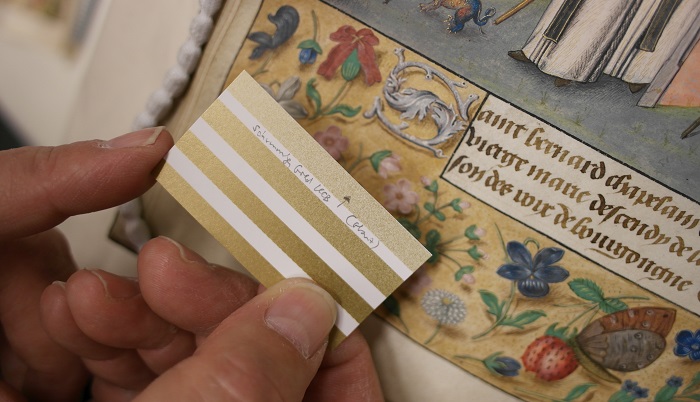
The Finest Brush Gold
The Flemish Chronicle of Philip the Fair dazzles the viewer with a profusion of very fine brushwork strokes of gold: they are applied to highlight the draperies, to create tiny patterns in the precious garments, to adorn the architectural frames and in innumerable touches in the borders. The authentic reproduction of gold requires the highest level of perfection. Comparing the printing proofs with the original, the lithographer has to rely on his experience to ensure that the brushwork strokes of gold are correctly reproduced in all areas. Only after repeated corrections of the colours and the applied gilded areas, can the edition be printed; meanwhile the quality is continuously monitored.
A Handmade Binding
The binding of the Flemish Chronicle of Philip the Fair probably originates from the 16th century. True to the original, the facsimile is bound in old rose velvet, featuring eight corner pieces and a medallion in the centre of both the front and back cover. Before the decorated elements are cast in brass, the corresponding casting moulds have to be produced. Subsequently, the engraver employs the finest tools to incise the filigree pattern. Then a specialized restorer has to apply a patina to the corner pieces and the medallions, and finally the book binder fastens them onto the velvet binding.
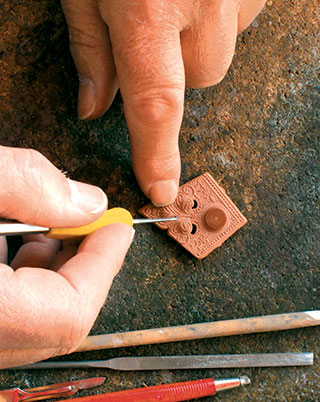
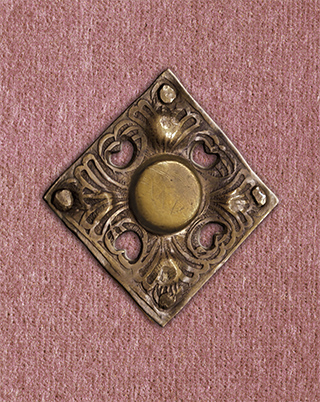
Bilderchronik Philipps des Schönen
The Facsimile Folder for the Edition
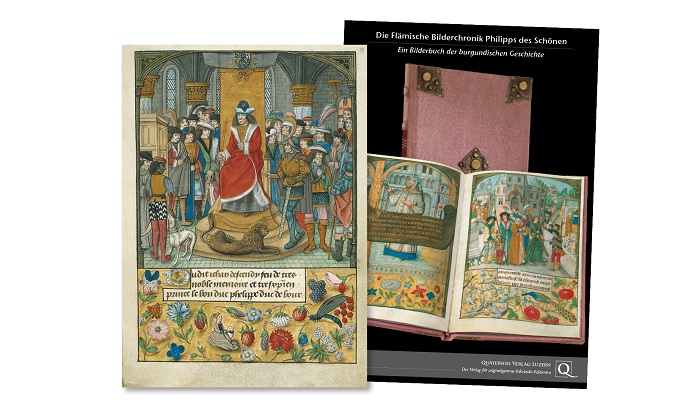
The high-quality documentation folder for the Flemish Chronicle of Philip the Fair gives an excellent first impression, both of this masterpiece accomplished by the Ghent-Bruges School, and of its faithful reproduction as a facsimile edition.It contains one original facsimile leaf which dazzles the viewer with its vibrant colours and subtly shimmering gold hues, while the narrative takes him to the world of the magnificent court of the dukes of Burgundy in the 15th century. A richly illustrated brochure throws light on the highly interesting historical background of the manuscript. By means of the detailed descriptions of the miniatures, learn more about the entire wealth of book illumination.
Bilderchronik Philipps des Schönen
Order facsimile folder
Click here to go to the online shop (German only) where you can order the facsimile folder for the Chronicle of Philip the Fair edition. Or send us an email to info@quaternio.ch.
Request brochure
We would be glad to provide you with additional information regarding the fine art facsimile edition of the Flemish Chronicle of Philip the Fair.




